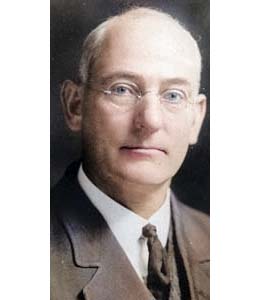
2015 NIA Hall of Fame Inductee
Fred M. Locke
|
|
2015 NIA Hall of Fame Inductee Fred M. Locke |
Fred M. Locke, the son of a telegrapher, was born in Honeoye Falls, NY in 1861. While working as a telegrapher for the New York Central and Hudson River Railroad in Canandaigua in 1883, he became interested in ways to improve the small glass insulators supporting the telegraph wires. One night during a heavy rain he was blamed for sleeping on the job after repeated attempts to reach him failed. He was convinced the electric current was leaking over the wet surface of the insulator making the line inoperable. He began experimenting with insulator designs to reduce electrical losses across the surface of insulators. He initially worked with his Honeoye Falls boyhood friend, John Lapp, Sr. and in 1889 they obtained a joint patent for an improved glass insulator (CD 1182) that was mounted underneath the cross arm with an iron hook to support the telegraph wire.
In 1890, he installed the first electric lights in Victor, NY using a steam-powered generator he designed. Fred Locke’s interest in insulators grew, resulting in the introduction of the first high voltage porcelain insulator, U-923C, made for him by R. Thomas & Sons Co. with dry process porcelain. This insulator was used on early electrical power transmission lines in California and many other states. In 1892, he started a small electrical supply business selling his patented insulators and pins. Fred had glass and porcelain insulators manufactured to his designs by Thomas, Imperial Porcelain Works, Electric Porcelain & Mfg. Co., Hemingray, and Brookfield from 1890 until about 1900.
In 1898, Fred Locke built his own factory to manufacture porcelain. From modest beginnings, the insulator factory soon became known around the world, supplying millions of porcelain insulators to the growing electrical power industry. Mr. Locke “retired” from active manufacture of porcelain insulators in late 1904, preferring to continue his experiments to develop the perfect insulator. There he developed heat resistant glass used by the Fry Glass Co. and Corning Glass Works. Corning is still using one particular patented glass formula that was used for Pyrex Flameware top-of-stove cookware in the 1930’s and 1940’s. That glass is used today for modern glass stovetops and Space Shuttle windows.
Fred M. Locke is known as “The Father of Porcelain Insulators”.
 Return to the National Insulator Association page
Return to the National Insulator Association page